Astrantia Typically Self-Seed, But You Can Sow Them Yourself In A Desired Area
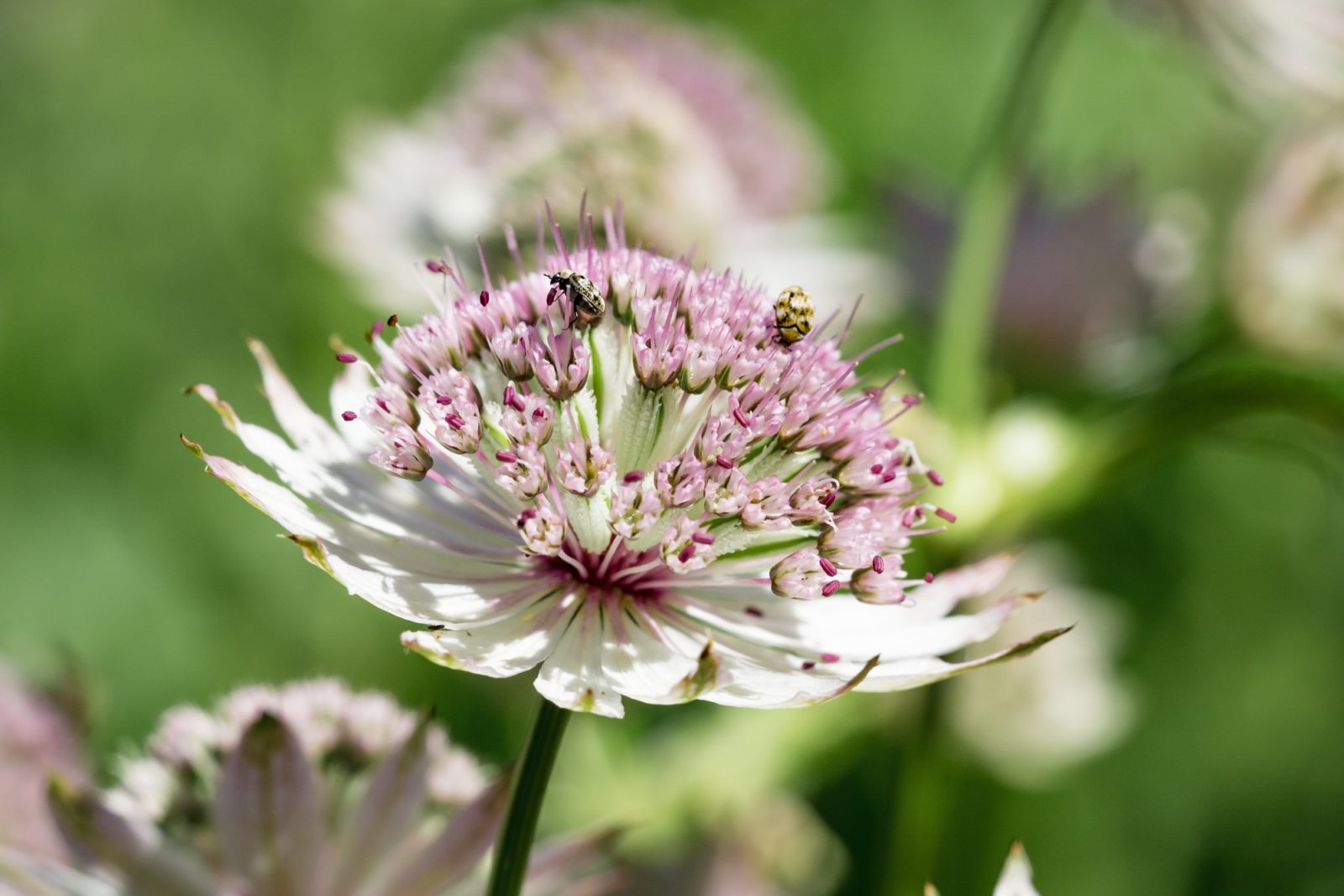
PERENNIALS > ASTRANTIA > SOWING

Elizabeth is a Permaculture Garden Designer, Sustainability Consultant and Professional Writer, working as an advocate for positive change. She graduated from the University of St. Andrews with an MA in English and Philosophy and obtained a Diploma in Applied Permaculture Design from the Permaculture Association.
Reviewed By ROY NICOL

Roy is a Professional Gardener and Horticultural Consultant, specialising in large garden year-round maintenance and garden development. He is an RHS Master of Horticulture and uses his research in the application of no-dig methods in ornamental garden settings. Roy has been a Professional Gardener for more than six years and is a member of the Chartered Institute of Horticulture, Professional Gardener's Guild and Association of Professional Landscapers (Professional Gardener).
Contributions From CAROLINE SAMUEL

Caroline Samuel is the owner of specialist plant nursery Letham Plants. Caroline studied Horticulture at Oatridge College and during this time began growing a range of perennials that she then exhibited at major flower shows. For the last 10 years, she has specialised in Astrantia both as a garden plant and as a cut flower - culminating in a Silver Gilt Award at RHS Chelsea in 2022 for her specialist range of Astrantias.
IN THIS GUIDE
Astrantias, also known as ‘Masterworts’, are attractive flowering perennials.
They are herbaceous plants with attractive, star-shaped floral bracts, which radiate out around pincushion-like flowering heads during the summer months.
Sometimes, Astrantias may self-seed in a suitable spot in your garden, but you can also take things into your own hands.
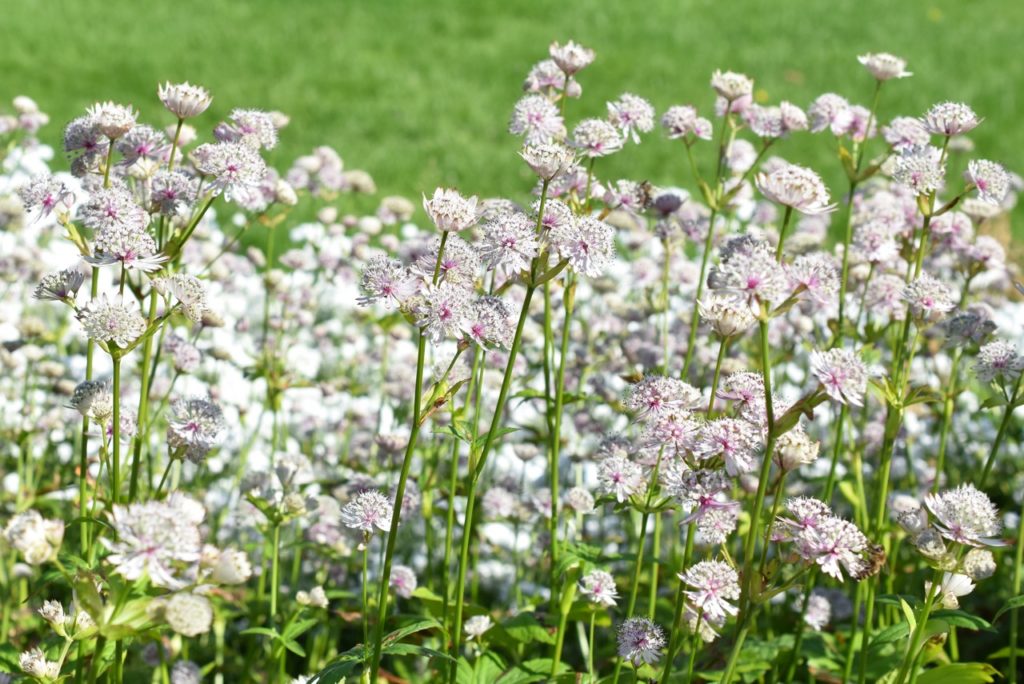
Astrantias can be sown using the seed collected from existing plants in your garden.
The process is simple:
- Collect or purchase your Astrantia seeds.
- Fill a seed tray or pot with seed-sowing compost.
- Press the Astrantia seeds onto the surface of the growing medium.
- Cover the Astrantia seeds with a thin layer of horticultural grit or vermiculite.
- Leave the seeds in a cool, bright spot for germination to take place.
- Prick out the masterwort seedlings and plant them out into their growing positions.
Read on for a more in-depth discussion of the steps above.
| Difficulty | Medium |
| Equipment Required | Seeds, seed trays or pots, seed-sowing compost |
| When To Sow | February to April or August to October |
| When To Plant Out | October to April |
When To Sow Astrantia
If you collect your own seeds, either from a plant in your own garden or from the garden of a friend or relative, these can be sown as soon as they have been collected in August, September or October.
“Seeds sown when they are fresh have the best chance of germination, which can be erratic,” says Roy Nicol, a Professional Gardener.
Alternatively, they can be stored carefully in a paper envelope and planted in spring, between February and April.
Purchased seeds are typically sown in spring indoors or under cover.
1) Collect The Seeds
Seeds from Astrantia plants are relatively easy to collect.
Once the seed heads are brown and dry and just before they open, place these into a paper bag and give them a shake.
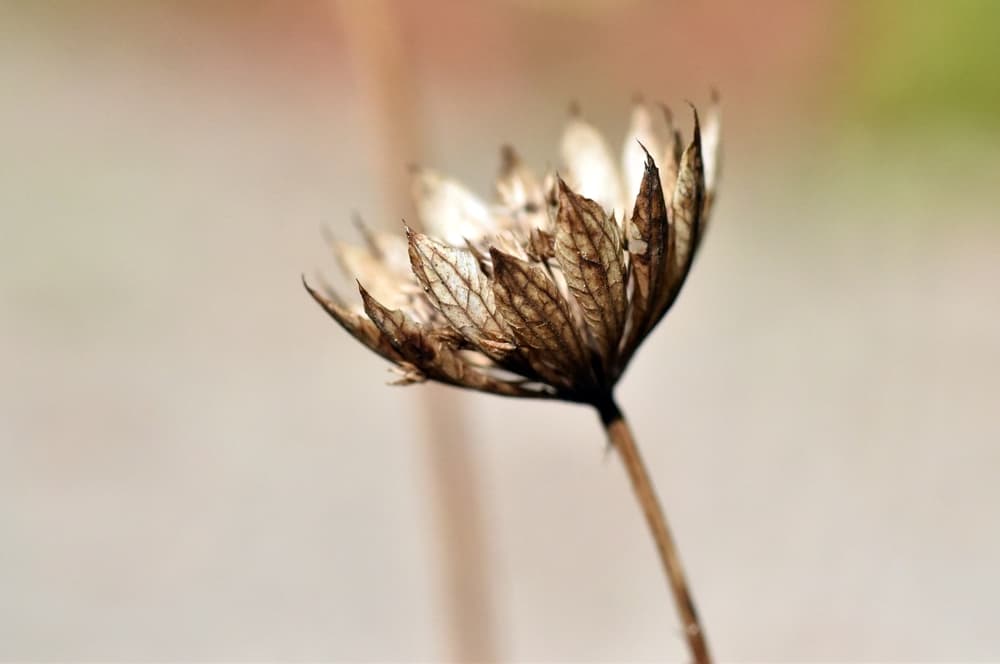
The seeds will fall into the bag, ready to be sown.
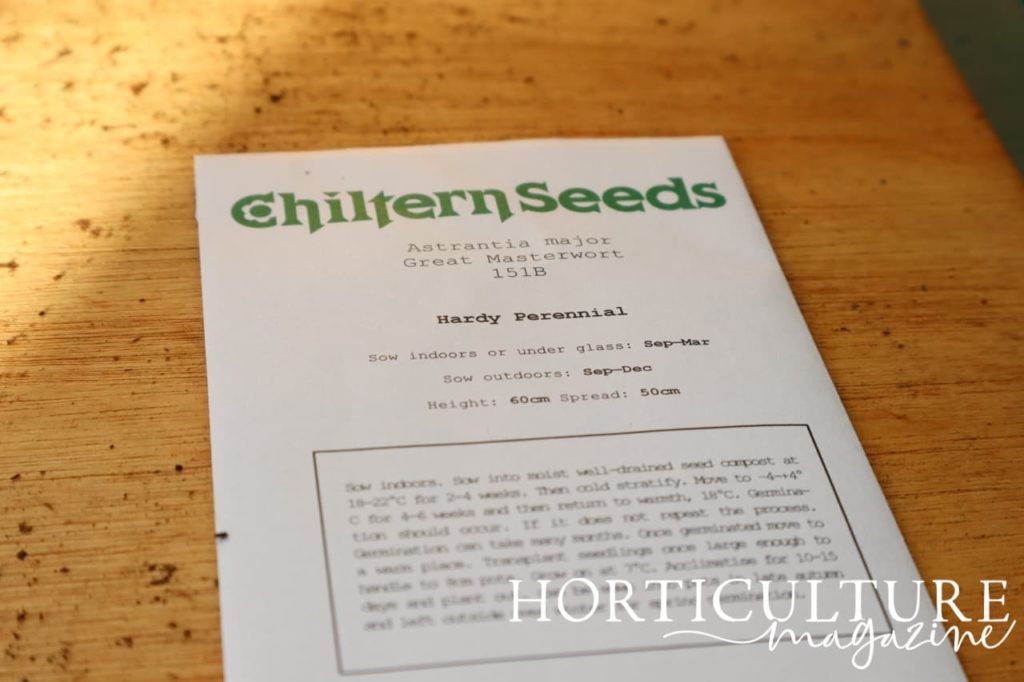
Alternatively, you can purchase Astrantia seeds to sow.
2) Prepare Your Seed Trays
Make sure you have a suitable seed tray or pots ready.

This should be filled with seed-sowing potting mix, which is moisture retentive yet aerated and reasonably free-draining.
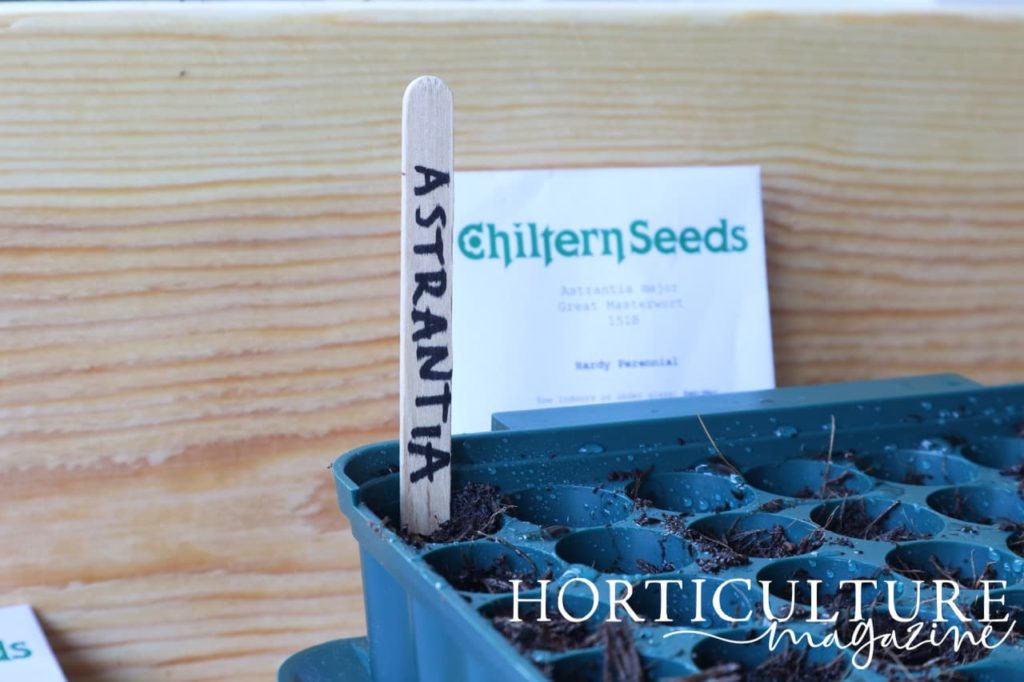
3) Sow Astrantia Seeds
The seeds of Astrantias are not buried within the growing medium but are instead pressed gently into the surface.
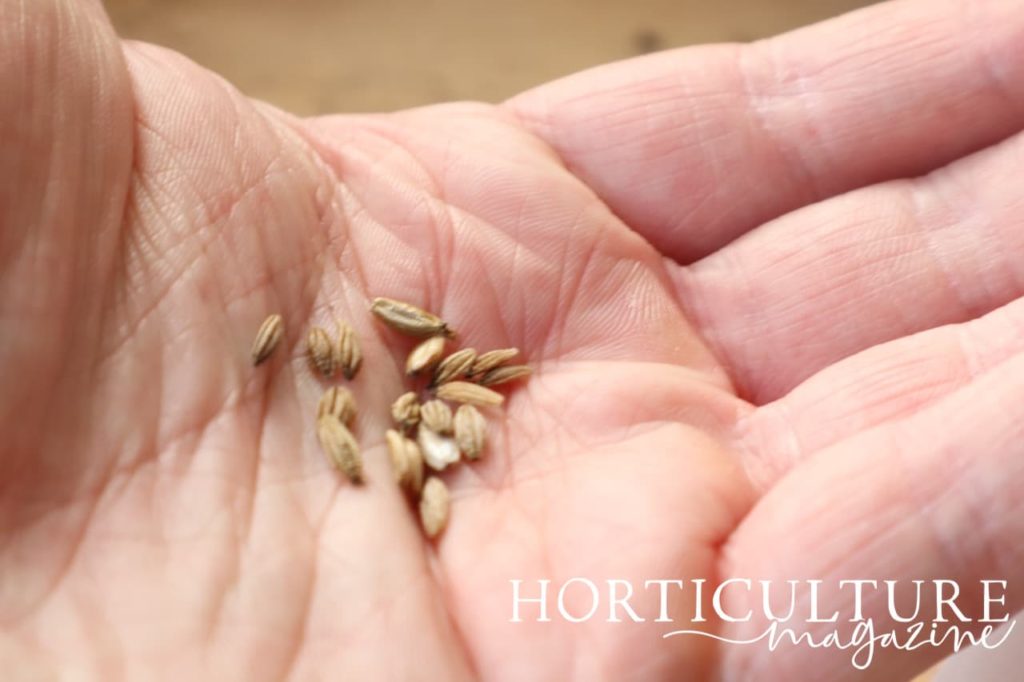
They should not be covered over with the potting mix.
4) Cover Seeds With A Thin Layer
Instead, cover over the seeds with a thin protective layer of horticultural grit or vermiculite.
Place this tray into some water so it can soak up moisture from below.
“This method helps to engage the seeds with the potting mix rather than disturbing them as watering from above can do,” explains Roy.
This ensures appropriate conditions and germination should hopefully take place.
“Astrantia seeds should be sown fresh in seed trays around October, covered over lightly and then left outside over winter,” explains Caroline from the Astrantia specialist nursery Letham Plants.
“If seeds are to be sown in the spring, it is best to place them in a refrigerator for 4 weeks before sowing,” explains Roy.
“This cold stratification will encourage germination.”
5) Wait For Germination
Astrantia seeds should germinate fairly quickly.
Not all of the seeds will germinate, but you should see some new growth after a relatively short period.

Sometimes, when sowing in autumn, the seeds may not germinate.
If this occurs, simply place the tray somewhere in the cold outdoors.
The period of cold over the winter may well lead to germination in late winter or early spring.
“Astrantias need the cold to germinate,” Caroline elaborates.
“Make sure the seed trays do not dry out and once the weather starts to warm up, the seeds will germinate.”
6) Prick Out Seedlings
If sowing in autumn, seedlings can be pricked out and potted on.
You can place the plants in containers to grow on or transplant them straight into their final growing positions in your garden.
Young Astrantias can be planted out in your garden any time between October and April.
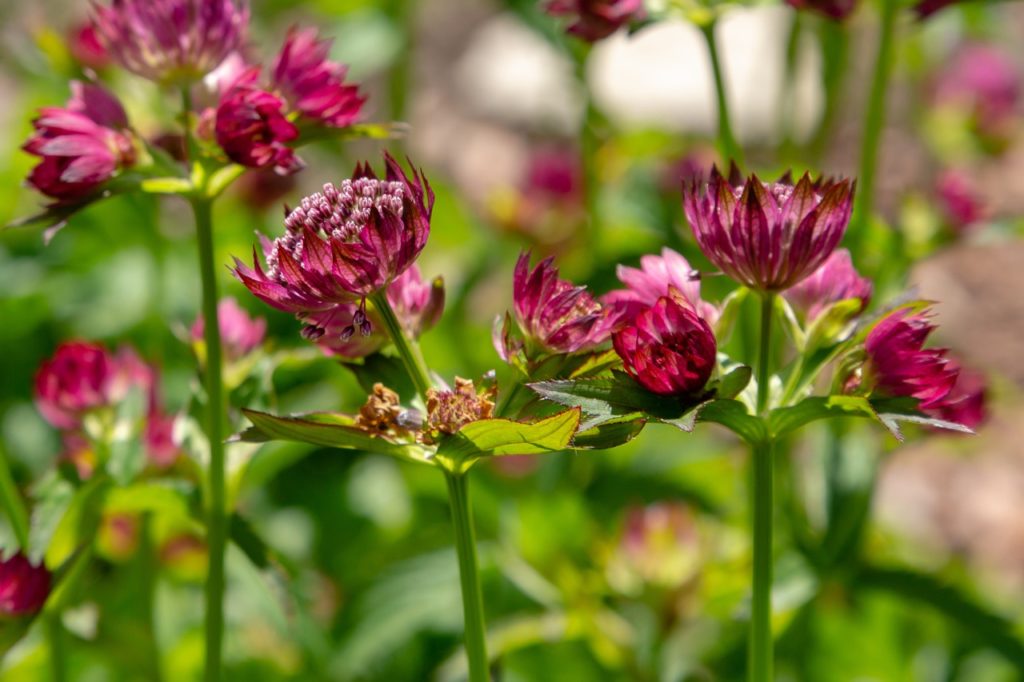
Be sure to choose a spot which is in full sun or, ideally for most varietals, in partial or dappled shade.
An ideal location will have moisture-retentive, humus-rich, loamy soil which is high in organic matter.
“Seed-grown plants will usually flower in their second year,” says Caroline.
Choose the right spot and these useful and attractive plants will be great trouble-free additions to your garden, delighting you with their flowering displays for a number of years to come.
